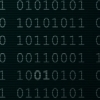Start with a simple base model and low polys to get the base shape and topology of the object right. Add/subdivide as many polys as you need, to get as much detail as you want on the model with the sculpting tools. Create some sort of map (sorry don’t know much of the names yet) of the high poly model, and then bake (whatever that means) that map onto the low poly model of that object.
That is one way to do it, however some times your final and base model looks nothing alike, at this point you will build a lower poly model around the high poly model; this is known as retopology.
Another question that I have is: How many polys is actually low poly?
Yes like many things in game development it depends.
For unreal the max batch limit, that is the amount of polygons a single mesh can be, is 64 000 triangles; Unity is +/- 52 000. What happens when you load in a object larger than this is that it will be one object with more than one mesh.
The amount of meshes you can have on screen at a time is decided by OpenGL or DirectX (DirectX can have up to 50 more) and your graphics card. The amount for the mid range PC is 300-350 at the moment.
That means that Unreal can render up to 22400 triangles of static meshes with the basic shader, on screen and keep above 60 frames per second, on a mid range PC.
If 22400 triangles sound low then consider that the mid range screen size is 1600*900, that is about one polygon for each 64 pixels on screen.
Another question I asked myself as I was learning from videos and courses. Sometimes when I watch someone build an environment scene in a game engine like Unreal, Unity or Cry, they use two different approaches or a mix of them. One group works with a lot of building blocks like single walls to build a whole house, or single head sized stones to build a small wall out of them. Or they use models of single wood planks, stick them together and build a wood wall/roof/floor like this. Other people just have the whole thing modeled beforehand in a modeling software and just insert the whole building to the scene.
This depends on how the assets where made.
Set pieces are things like walls and doors, they are things that will appear in the scene multiple times. Set pieces work like Lego blocks, your level designer gets a bunch of them and then builds every thing from them.
This has some huge performance benefits and production benefits. This is also the preferred way of working in Unreal as unreal uses instances, meaning that if you made one crate or made a create out of 10 pieces of wood instances it will have the same performance.
This is because unreal batches draw calls based on materials, that however means that if each piece of wood had it's own material they would be more costly- than one crate with one material- if they didn't shared the same material.
You will want to lookup "Environment creation for games" to understand how set pieces work.
The single object approach is used when making a piece that will only appear at one point in the game, these are usually key game elements.
Because these kind of models use special textures only meant for them, it's harder to reuse the resources and you would need more models and textures to make scenes.
The upside to using this technique is that the object can have more details and will look more real than one assembled from other model parts.
Fallout 4 allows players to use the set pieces to build, the difference is that the level designer isn't bound by the same rules as the players.
edit: Most Tutorials are focused on a single model, a key piece. Most courses are based around a set, because they have more time.
A full set takes a weak on average to make.









